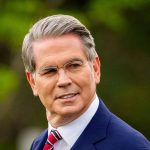Famed Economist Who Predicted 2008 Crisis Warns of Looming Market Shock
David Rosenberg, the economist renowned for predicting the 2008 financial crisis, has once again sounded the alarm. In his latest analysis, the founder of Rosenberg Research flagged troubling inconsistencies in job data, a stock market bubble driven by artificial intelligence (AI), and a potential economic downturn. His warnings come at a time of growing uncertainty, with markets and policymakers alike grappling with conflicting economic signals.
Jobs Data: The Fault Lines of Economic Growth
The U.S. economy added 175,000 jobs in April 2024, falling significantly short of the 238,000 predicted by economists. While this may seem like a minor miss, Rosenberg delved deeper, highlighting what he sees as critical flaws in the Bureau of Labor Statistics’ (BLS) data collection.
Rosenberg pointed out stark differences between the BLS’s monthly payroll survey and its more comprehensive datasets, including the Business Employment Dynamics (BED) and Quarterly Census of Employment and Wages (QCEW). For example, while the payroll survey showed the economy gaining 640,000 jobs in Q3 2023, the BED data indicated a loss of 192,000 jobs during the same period.
“These discrepancies are not just statistical noise,” Rosenberg wrote in a note to clients. “The data is overstated—by historical proportions. When the inevitable revisions come, it will be a shock to both the Fed and the markets.”
He attributed these discrepancies to the BLS’s reliance on surveys from a small sample of businesses. Low response rates and challenges in identifying whether businesses have closed contribute to inaccuracies. According to Rosenberg, these issues cast doubt on the reliability of the headline job numbers, suggesting the economy may not be as resilient as it appears.
Implications for the Federal Reserve
The Federal Reserve, currently in a holding pattern after raising interest rates multiple times in 2023, may find itself blindsided by these revisions. Rosenberg believes that the Fed is relying too heavily on “lagging and contemporaneous indicators” filled with high error margins.
“The longer the Fed waits, the more it will have to do on the rates front,” Rosenberg warned, drawing parallels to previous periods of economic turmoil in 1991, 2001, and 2008.
His analysis underscores the risk of policymakers misjudging the economy’s true state, potentially leading to more aggressive rate hikes down the line—moves that could exacerbate market instability.
AI Stock Bubble: A New Crisis Brewing?
Beyond job data, Rosenberg has also turned his attention to what he describes as an “AI-fueled bubble” in the stock market. In a separate note to clients, he argued that the surge in stock prices for companies involved in artificial intelligence is unsustainable.
Citing Nvidia as an example, Rosenberg pointed to the company’s sharp single-day drop in April—the worst since March 2020—as evidence that the bubble may already be deflating. Nvidia, a leader in AI hardware, had seen its stock climb hundreds of percentage points since 2022, but recent volatility has raised questions about the durability of these gains.
“The intense AI-fueled momentum to the upside is now heading in reverse,” Rosenberg wrote, likening the situation to past speculative bubbles, including the dot-com crash of 2000 and the housing market collapse of 2008.
While Nvidia’s stock has partially recovered, it remains $60 below its peak earlier this year, highlighting the fragility of investor sentiment in this sector.
Historical Patterns: The Death Cross
Rosenberg also pointed to a foreboding technical pattern in the stock market: the death cross. This occurs when an index’s 50-day moving average drops below its 200-day average, signaling weakening momentum.
The pattern appeared in March 2022, just before the recent AI boom, and has historically preceded major market downturns. It was seen in 2008 ahead of the financial crisis, in 1929 before the Great Depression, and in other key moments of economic distress.
“History doesn’t repeat itself, but it often rhymes,” Rosenberg said, warning that the death cross could signal further trouble for equity markets.
Contrasting Views from Market Leaders
Rosenberg’s dire warnings are not isolated. A growing number of market leaders and billionaires have expressed concerns about the state of the economy.
Jeff Bezos, Mark Zuckerberg, and other high-profile executives have recently sold significant stakes in blue-chip stocks, moves that some analysts interpret as a signal of waning confidence in the market.
Meanwhile, JPMorgan CEO Jamie Dimon has also sounded the alarm. While reporting strong first-quarter earnings for 2024, Dimon described the financial outlook as “uncertain,” citing persistent inflation, geopolitical conflicts, and other destabilizing factors.
“Many economic indicators continue to be favorable,” Dimon said, “but we remain alert to significant uncertainties. We must prepare for a wide range of potential environments.”
The Debt and Dollar Debate
Rosenberg also addressed the growing concern over U.S. national debt, which has now surpassed $34 trillion—nearly matching the size of the entire U.S. economy.
While some economists worry about the sustainability of such debt levels, Rosenberg struck a more measured tone, pointing to the U.S. dollar’s status as the world’s reserve currency.
“My best speculation is that U.S. debt will be acceptable for a very long time because there’s not much alternative,” he said.
However, he cautioned that the growing fiscal deficit, which the Congressional Budget Office predicts will rise to 8.5% of GDP by 2054, could eventually force policymakers to take action.
“They may not want to decrease spending, but they’ll likely take a larger percentage of what we own through higher taxes,” Rosenberg predicted, adding that this could further weigh on consumer sentiment and economic growth.
Related: Warren Buffett Drops Bombshell: Higher Taxes Likely as US Debt Soars to $34 Trillion
A Legacy of Accuracy
Rosenberg’s bearish outlook carries weight because of his track record. In 2008, he was among the few economists who accurately predicted the financial crisis. At the time, he cited the presence of a death cross and other warning signs, which were largely ignored until the market plunged.
While his current warnings have yet to materialize, the data discrepancies, market volatility, and broader economic uncertainties he highlights cannot be ignored.
Preparing for the Unknown
Rosenberg’s analysis serves as a wake-up call for investors and policymakers. His warnings about data inconsistencies and overvalued stocks should prompt greater scrutiny of economic indicators and financial markets. As we learned in 2008, ignoring the signs of instability can have devastating consequences.
While no one can predict the future with certainty, preparation is key. Diversifying investments, reducing exposure to speculative assets, and maintaining a long-term perspective can help mitigate risks in these uncertain times. Whether or not Rosenberg’s predictions come to pass, his insights remind us of the importance of staying vigilant in an ever-changing economic landscape.
As the U.S. economy navigates a complex web of challenges—from flawed job data and rising debt to speculative market bubbles—Rosenberg’s warnings serve as a sobering reminder of the risks ahead. Whether these concerns materialize as another recession or merely a market correction, investors and policymakers alike would do well to heed the lessons of history.











